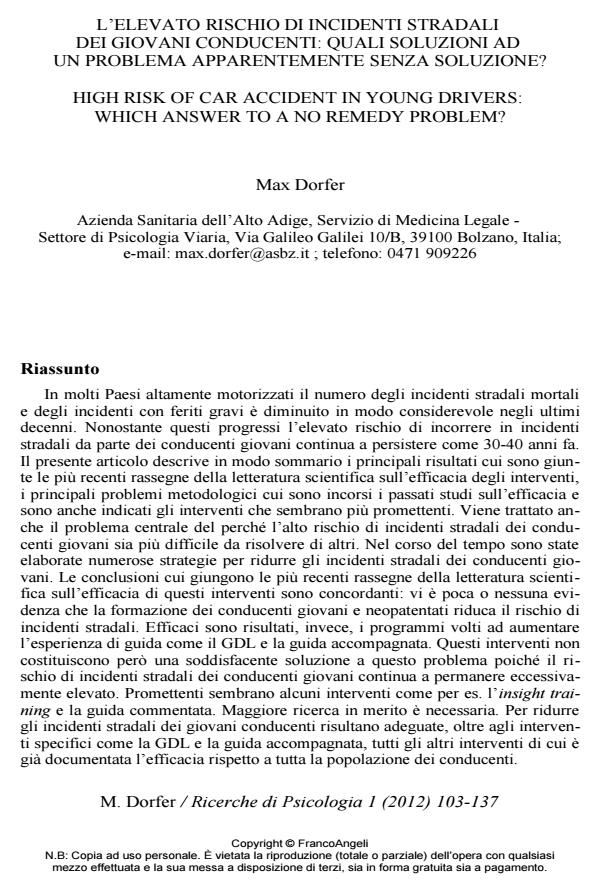High risk of car accident in young drivers: which answer to a no remedy problem?
Journal title RICERCHE DI PSICOLOGIA
Author/s Max Dorfer
Publishing Year 2013 Issue 2012/1
Language Italian Pages 35 P. 103-137 File size 848 KB
DOI 10.3280/RIP2012-001006
DOI is like a bar code for intellectual property: to have more infomation
click here
Below, you can see the article first page
If you want to buy this article in PDF format, you can do it, following the instructions to buy download credits

FrancoAngeli is member of Publishers International Linking Association, Inc (PILA), a not-for-profit association which run the CrossRef service enabling links to and from online scholarly content.
In many countries the number of fatal road accidents and accidents with serious injuries has decreased significantly in recent decades. Despite this considerable improvement the high risk of road accidents by young drivers continues to persist. This article describes the main results of contemporary reviews and research on the effectiveness of interventions, major methodological problems which have incurred the previous studies and also specify the countermeasures that seems most promising. Is also dealt with the central issue of why the high risk of accidents for young drivers is more difficult to solve than others. Over time, many countermeasures have been developed to reduce road accidents of young drivers. The conclusions reached by the most recent reviews of the scientific literature on the effectiveness of these interventions are consistent: there is little or no evidence that the training of young drivers and novice drivers reduce the risk of road accidents. Programs which are aimed at increasing the driving experience such as GDL and accompanied driving are effective in decreasing traffic accidence. This programs however do not constitute a satisfactory solution to this problem because the risk of road accidents of young drivers continues to remain unacceptably high. Some programs such as insight training and commentary driving seem promising. More research is needed. To reduce road accidents by young drivers are recommended, in addition to specific interventions such as the GDL and accompanied driving, all other countermeasures that have already documented the effectiveness for the general population of drivers.
Keywords: Young driver, Novice driver, Driver training, Risk factors, Accident countermeasures, Driver training evaluation.
Max Dorfer, L’elevato rischio di incidenti stradali dei giovani conducenti: quali soluzioni ad un problema apparentemente senza soluzione? in "RICERCHE DI PSICOLOGIA " 1/2012, pp 103-137, DOI: 10.3280/RIP2012-001006